1991 wasn’t an especially auspicious year for movies, but it was a formative one for this (once) young cineaste. That’s despite the fact that I’ve never been overly impressed with ‘91’s big blockbusters (TERMINATOR 2, ROBIN HOOD: PRINCE OF THIEVES, SLEEPING WITH THE ENEMY, HOOK, THE ADDAMS FAMILY, THELMA AND LOUISE), nor its major cult items (THE DARK BACKWARD, CLOSET LAND, THE ADJUSTER, DROP DEAD FRED, POISON, CITY OF HOPE, SLACKER, STONE COLD).
The news wasn’t all bad, though, as I quite enjoyed THE DOORS, RUSH, BARTON FINK, THE COMMITMENTS, THE LAST BOY SCOUT, RAISE THE RED LANTERN, THE FISHER KING and JFK—and also, of course, the thirty lesser known films ranked below, whose influence on me has been and remains profound.
30. MERCI LA VIE
An attempt by France’s Bertrand Blier, who normally specializes in sexy comedies, at Godardian experimentation. At first MERCI LA VIE seems like a female-centric version of Blier’s subversive masterpiece GOING PLACES, with two shiftless young women (Charlotte Gainsbourg and Anouk Grinberg) getting together in a beachfront village and embarking on an aimless trouble-making spree. But before long the proceedings grow extremely fragmented and self-conscious, with film stock that alternates pell-mell between black-and-white and color, a constant switch between the here-and-now and identical events occurring in WWII, and frequent intrusions by filmmakers making a movie starring the two gals (this one, presumably). I’ve no idea what the point of all this might be, but the visuals, as I’ve come to expect with Blier, are stunning, as are the leading ladies, making for a uniformly good-looking film that’s oddly compelling. The soundtrack is also quite strong, incorporating cuts by Philip Glass and Arno’s indispensable tune “Lonesome Zorro” (also heard in 2007’s BEN X, but utilized far better here).
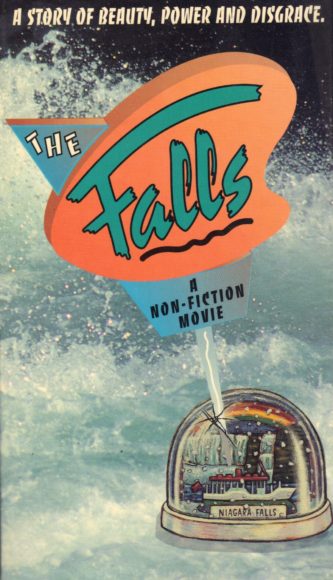 29. THE FALLS
29. THE FALLS
Not to be confused with the similarly titled Peter Greenaway film, this is a highly eccentric Canadian made documentary about Niagra Falls and its slow depletion. Evocatively lensed and boasting an excellent Phillip Glass-ian score, it shows air-headed tourists wandering around the falls and gawking, unaware that a shitload of toxic waste is being dumped into the area every day. Featured are interviews with a middle-aged resident of the area talking about the many birth defects that have occurred, and an elderly rescue worker who discusses the many suicides he’s witnessed. Hypnotic stuff for the most part, but director Kevin McMahon mercilessly pads a film that would have worked just fine at 30 minutes to a bloated 89. Thus we have much off-topic subject matter (not content with indicting humankind for its depletion of the environment, McMahon also takes some ill-advised swipes at celebrity worship and violence in the media) and repetitive footage, proof that you can have too much of a good thing.
28. HAPPY DAYS (SCHASTLIVYE DNI)
An early effort by Russia’s late Aleksey Balabanov (OF FREAKS AND MEN, CARGO 200) that was allegedly based on Samuel Beckett’s iconic 1960 play HAPPY DAYS—but if so it’s an EXTREMELY loose adaptation that bears more in common with the work of Franz Kafka. Lensed in stark black-and-white, it features an uptight young man attempting to make his way in a harsh and indifferent world. Among other problems, he can’t seem to find a place to stay and everyone he meets is hostile. Only an old homeless man and a freaky woman landlord are the least bit sympathetic, and neither proves the type of friend one would want. The whole thing is extremely slow and meditative, indeed often agonizingly so, but its visual brilliance and dreamlike aura are compelling in an oft-kilter manner. Plus, at an economical 81 minutes the film never overstays its welcome.
27. THE FALL OF OTRAR (GIBEL OTRARA)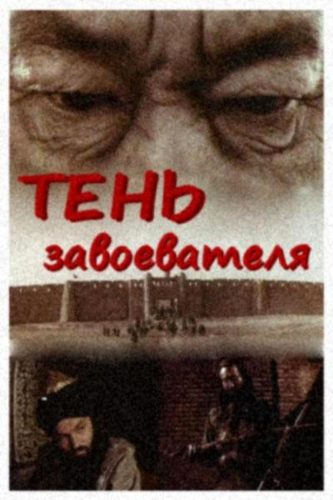
The reviewers proclaiming this film a masterpiece are way off, but it is an impressively gritty and brutal historical saga. One of the final films made in the Soviet Union, it’s a sepia toned depiction of the sacking of the Asian town of Otrar by the Mongol army of Genghis Khan in the 13th Century, which marked the start of a campaign that concluded with the Mongols ruling over the greatest land empire in history. The proceedings are staunchly historically grounded, and will be largely incomprehensible to anyone without a thorough foreknowledge of the events depicted and the reality-based characters who figure in them. Yet taken purely as immersive cinema the film is impressive, with splendorous battle scenes and a full-bodied recreation of a medieval milieu (it has more than a little in common with HARD TO BE A GOD, made by this film’s co-scripter Alexei German). Director Ardak Amirulov evinces a real talent for epic filmmaking, and pairs it with an unflinching eye for ugliness and brutality, making for a film that if nothing else seems very true to its historical period. Especially impacting is the horrific final torture divvied out to Otrar’s ruler, involving a facial mask made with boiling silver.
26. TOTO THE HERO (TOTO LE HEROS)
A most interesting French-made take on the work of England’s Dennis Potter. It concerns Toto (Michel Bouquet), a bitter man who believes he was switched at birth with a baby who grew up living the life Toto should have. The film, in tried-and-true Dennis Potter fashion, proceeds in a haze of memory and hallucination, with Toto living out an imaginary existence in which he’s a detective investigating the facts of his life (a la Potter’s THE SINGING DETECTIVE). His childhood isn’t entirely unhappy, just extremely turbulent, marked by a flighty sister and the suspicious death of their father. Eventually the sister runs off with Toto’s rival, intensifying his jealousy. As a grown-up Toto becomes obsessed with a young woman who reminds him of his sister, and they enter into an up-and-down relationship—with the rival never too far away. It ends with Toto as an old man looking to finally do his rival in, only to be stymied by a most unexpected intervention. It’s all quite lively and energetic in its approach, although I would have preferred a less self-consciously whimsical, more hard-edged presentation.
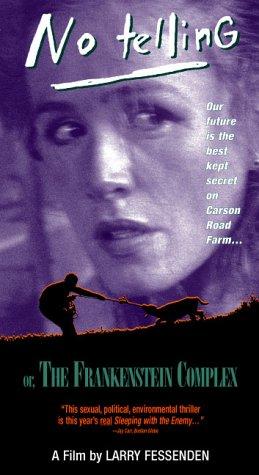 25. NO TELLING (a.k.a. THE FRANKENSTEIN COMPLEX)
25. NO TELLING (a.k.a. THE FRANKENSTEIN COMPLEX)
New York filmmaker Larry Fessenden preceded his well-received indie horror pics HABIT and WENDIGO with this perverse updating of any number of mad scientist tropes. In this film the mad scientist of note is a suburban man (Stephen Ramsey) who moves with his family to an isolated farming community so he can conduct horrific experiments on animals. Among his victims is an innocent dog he captures and turns into a hybrid dog/goat creature. Along the way the guy’s wife (Miriam Healy-Louie), who’s fallen under the spell of a local environmentalist, becomes suspicious of his activities, leading to an emotionally charged confrontation. The film is quite skillful in the way it alternates the scientist’s unwholesome activities with those of the residents of his community, who go about their business blissfully unaware of the damage they’re doing to the environment. Alas, the film overall is a bit overly fragmented and obvious in its approach, as it would take another few years for Fessenden to fully come into his own as a filmmaker.
24. MALINA
A most strange and fascinating surreal drama from Germany’s Werner Schroeter, scripted by the acclaimed novelist Elfriede Jelinek (THE PIANO TEACHER). Isabelle Huppert stars as a writer caught in an obsessive love affair with a man who screws around on her. That about sums up the narrative, which is related as, essentially, an extended dream. We see Huppert attempting to write a novel based on her tortured affair while hanging out in a burning house and dispassionately watching her lover have sex with other women. At a full two hours it’s all a bit much, especially with no ebb and flow to the one-note narrative, but again, the film exerts a definite bizarre fascination, and Huppert makes for a compelling anchor.
23. MY SOUL IS SLASHED (KAMITSUKITAI/DORAKIYURA YORI AI-0)
The Japanese video market of the 1990s produced some pretty interesting films, among them this highly audacious take on vampires, an exhausted subject MY SOUL IS SLASHED treats with considerable freshness and ingenuity. It features a terrific Ken Ogata as Ishikawa, the head of a large pharmaceutical company who’s killed in an act of corporate espionage. As he’s dying he’s given a blood transfusion in a hospital, but the blood he’s injected with is that of Dracula, stored in the hospital by a mysterious young woman. Shusake Kaneko’s helming is workmanlike at best, and marred by a distractingly histrionic music score. Yet, that latter element aside, Kaneko’s no-frills approach actually works to the film’s advantage. So does the mundanity of the suburban locations, with pivotal sequences taking place in the protagonist’s unassumingly decorated living room and a kids’ playground, which effectively counterpoint the supernatural shenanigans.
22. FINAL APPROACH
This film was hurt by a severely misguided advertising campaign that made it look like a space opera rather than the intimate mind-fuck it is. It also suffered from the fact that it appeared shortly after 1990’s similarly themed JACOB’S LADDER, which overshadowed it in every respect. Yet FINAL APPROACH has a fire and strangeness all its own, being the magnificently slip-streamy account of an amnesiac pilot (James Sikking) being interrogated by an eccentric psychiatrist (Hector Elizondo), during which Sikking finds his sense of reality dissolving in a morass of memory and hallucination. In this skewed universe people exchange identities and speak through one another’s mouths, events from one time frame intermingle with those of another, and details of a classified flight Sikking manned gradually come to light. The ultimate revelation isn’t exactly difficult to foresee (especially if you’re familiar with the aforementioned JACOB’S LADDER), but getting there is quite a trip. The film is especially noteworthy for its highly innovative and audacious sound design (it was, FYI, the first-ever feature to be screened with full digital audio), which offsets the at-times subpar filmmaking and performances.
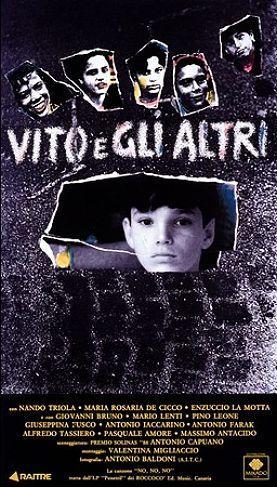 21. VITO AND THE OTHERS (VITO E GLI ALTRI)
21. VITO AND THE OTHERS (VITO E GLI ALTRI)
This, the directorial debut of Antonio Capuano (of MARIO’S WAR and DARK LOVE), was billed as Italy’s answer to gritty child-centered movies like PIXOTE and SALAAM BOMBAY. In actuality it’s something far different, being an unforgiving depiction of the lives of several poverty-stricken children in Naples done up in a highly stylized manner. The tone is set in the unforgettable opening scene, in which a deranged man senselessly murders his wife and daughter, as shown via a magisterial Stanley Kubrick-worthy pan. The man’s young son Vito (Nando Triola), who witnesses the killings, goes on to wallow in crime, prostitution, illicit substances and much excess TV watching (television, let’s not forget, was considered the major despoiler of youth in the pre-internet era). The outrages of Vito and his pals unfold in a series of highly quirky and occasionally surreal vignettes, a presentation that can be irritating at times (i.e. the scenes in which Vito and co. speak directly to the camera about their proclivities, which are unnecessary), although the filmmaking technique is always compelling.
20. HIGHWAY PATROLMAN (EL PATRULLERO)
Alex Cox can always be counted on for the unexpected, and with HIGHWAY PATROLMAN he turned out one of the most wholly unexpected of all his films: a Spanish language quasi-actioner filmed in Mexico with a local cast and crew. Inspired by the trashy Mexican made action films that inspired Cox, it’s a notably vibrant and stylish depiction of a naïve highway patrolman in Mexico faced with some hard truths about life. In visualizing the film Cox utilizes lengthy tracking shots that belay the trashiness of the enterprise, and the lead performance of Roberto Sosa also deserves singling-out, an enormously moving and empathetic portrayal of a virtuous man being overtaken by corruption in a lawless land.
19. SECRET FRIENDS
This film, the feature directorial debut of the late Dennis Potter, was slammed by critics, who hated it nearly as much as they did the much reviled Potter miniseries BLACKEYES (1989). I happen to like BLACKEYES a fair amount, and also SECRET FRIENDS, which I find a consistently haunting and fascinating viewing experience. Loosely inspired by Potter’s loopy novel TICKET TO RIDE, it takes place aboard a train where a man (Alan Bates) contemplates his marriage to the flighty Gina Bellman. The proceedings take place largely in Bates’ mind as he thinks back over his marriage, ruined by his own infidelity and a possible murder. In true Potter fashion, fantasy and reality coalesce in consistently unpredictable fashion as an imaginary friend from Bates’ childhood—actually Bates himself in a more daring and outgoing guise—enters the fray, and eventually instills himself as the protagonist. I can see how this film might annoy viewers: it’s incredibly dense and experimental, decked out with all manner of avant-garde tricks and refusing to ever sort itself out. Yet it’s required viewing for any true Dennis Potter fan, being a veritable touchstone of quintessentially Potter-esque quirks and obsessions as representative in its own way as THE (original) SINGING DETECTIVE.
18. SHAKES THE CLOWN
Not as great as some people would have you believe but still a blast, this is the so-called “CITIZEN KANE of alcoholic clown movies.” It was the filmmaking debut of comedian Bobcat Goldthwait, who plays the title character, a down-on-his luck clown living in a community populated by similarly afflicted clowns who in their spare time beat up mimes. All this is quite funny and profane, particularly a hilarious bit at a kid’s birthday party in which Shakes tells the kid exactly why he has to have a clown on hand (i.e. because he’s a loser)—although the ever-mugging Julie Brown is also on hand to grate. The real problem comes in the third act, when Shakes gets framed for a murder and has to chase down a bad clown, leading to a disappointingly conventional finish. Regarding the rest of the film, conventional is the last thing I’d call it.
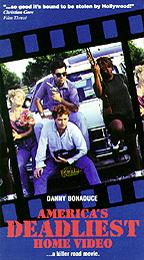 17. AMERICA’S DEADLIEST HOME VIDEO
17. AMERICA’S DEADLIEST HOME VIDEO
A much better than average shot-on-video thriller that was pulled off with great ingenuity. Made 8 years before THE BLAIR WITCH PROJECT, AMERICA’S DEADLIEST HOME VIDEO presents itself as the video diary of a dude (Danny Bonaduce) who finds himself in the wrong place at the wrong time when he stumbles onto a motley band of hoods. These freaks, whose ranks include a wannabe stud, his fetching GF (played by MAGNOLIA’S Melora Walters) and a trigger-happy woman, drag Danny along, with his video camera capturing the whole twisted ride. Things start out with a bang, as a convenience store clerk is shot in a botched hold-up, and steadily spiral downward as the trio lose their heads, turning a fairly innocent crime spree into a murderous rampage. The acting (Bonaduce’s included) is strong, and the video-within-a-video angle is extremely well executed with (mostly) convincing realism.
16. DEADLY CURRENTS
A searing, oft-brilliant Canadian documentary on the Israeli-Palestinian conflict. Made with enormous cinematic verve, it presents us with a resolutely unbiased, nonjudgmental account of all sides of the issue. From the Palestinian protesters to the Israeli soldiers to the innocents caught in the crossfire to the American newsmen who risk life and limb to cover this nonstop tug of war, it’s all here, free of artifice and Hollywood sanitization. It may be a little too slick in parts—such as a lengthy TENEBRAE-like tracking shot—but overall DEADLY CURRENTS must be counted as a monumental achievement.
15. IN BETWEEN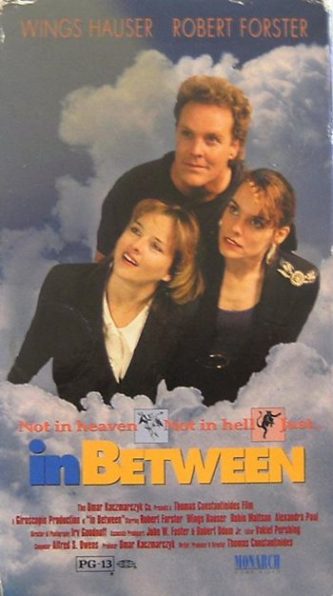
One’s enjoyment of this no-budgeter depends on how willing the viewer is to accept its ultra-tacky early nineties shot-on-video look–which, incidentally, is bolstered by a cast that includes the B-movie mainstays Wings Hauser, Alexandra Paul and Robin Mattson, in addition to the incomparable Robert Forster (who was in a career slump at the time). What the film has in its favor is a superbly imaginative, thought-provoking script that anticipates claustrophobia-fests like CUBE and ELEVATOR MOVIE. Here an egomaniacal opportunist (Hauser) wakes up one morning in a luxury mansion somewhere in LA, along with a party girl (Paul) and a businesswoman (Mattson). That they’re trapped in some alternate realm between life and death is evident in the fact that none of the doors in the mansion open and the mirrors don’t reflect any of the principals. Forster periodically turns up as a fed-up emissary for the angel of death, as do a bunch of constantly exercising bodybuilders seen outside. Writer-director Thomas Constantinides keeps this account quite lively despite the contained setting and the fact that so much of it is dialogue driven. The emphasis is on characterization throughout; the four principals are all distinct and unique individuals, and their varied reactions to the wonders that befall them are what really separate this film from the pack.
14. HIGHWAY 61
An absolutely kick-ass film from Bruce MacDonald that admittedly sounds like one of the many obnoxious David Lynch wannabes that flooded the marketplace in the early nineties (quite a few of which, like this film, emerged from Canada). While HIGHWAY 61, about a man and a woman on a cross country odyssey encountering one weirdo after another on the titular highway, has quite a few similarities to Lynch’s WILD AT HEART, it has a style and tone all its own. What sets it apart is MacDonald’s warm character-based touch; Don Mckellar and Valerie Buhagiar are both surprisingly endearing playing, respectively, a nerdy small-town barber and an amoral criminal. Also featured are a freaky rock star who hunts chickens in his mansion, a single father trying to turn his children into singers and the Devil Himself.
 13. SEX AND ZEN (YUK PO TUEN: TAU CHING BO GAM)
13. SEX AND ZEN (YUK PO TUEN: TAU CHING BO GAM)
This nutzoid Hong Kong sex romp eventually runs out of steam, but it remains a near-masterpiece due to a simply astonishing first half. Set in feudal China and based, apparently, on an erotic classic of Asian literature, it features a travelling scholar screwing (or at least trying to) pretty much everything that moves. What places this film above something like PORKY’S is director Michael Mak’s headlong pacing and deranged imagination. Looking to seduce a finicky maiden, our hero gets a horse’s dick sewed on in place of his own while his horny wife pines away for him back home, compulsively masturbating with a paint brush. There’s also a wild depiction of lesbian sex involving a flute, visualized from a must-be-seen-to-be-disbelieved overhead angle. An astonishing and genuinely erotic film, but it’s really too bad about that bum-fart final third, in which the proceedings grow increasingly unfocused and incoherent.
12. DINGO
Another wonderfully eccentric film from Australia’s prolific Rolf de Heer, who provides a musical drama featuring jazz legend Miles Davis in his only film role. He essentially plays himself, a veteran musician living in Paris who during a stopover in a godforsaken Australian town instills an enduring passion for jazz in the young Dingo. As a man Dingo (Colin Friels) dreams of traveling to Paris to meet his idol, and finally takes the plunge when an old friend shows up and announces he’s in love with Dingo’s wife. The film is a totally unique concoction that starts off in near-mystical fashion, almost like a Peter Weir potboiler, then becomes a gritty look at day-to-day life in the Australian outback, which in turn morphs seamlessly into a gaudy wish-fulfillment fantasy, with Dingo meeting his idol and seeing all his dreams come true. Holding it all together is the assured hand of de Heer, who conjures a touching and absorbing drama out of the most unlikely material. I’m admittedly not much of a jazz fan, but this film did more than any other to convince me that it just might have some merit.
11. LORD OF THE FLIES (POVELITEL MUKH)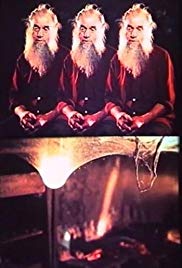
I’ve never seen anything quite like this visually stunning documentary evocation of decay and desolation in post-Glasnost Russia. The subject is an old man living a garbage-strewn hovel with what look like several dozen dogs and cats, just as many chickens and millions of flies—attracted by the many rotting animal carcasses that are deliberately left around. The reason the guy lures flies, we learn, is for the maggots they produce, which the old man boils and pickles as food for the chickens whose eggs and meat sustain him and his pets. The camerawork of director Vladimir Tyulkin is quite innovative in its constantly mobile, swooping grace, providing a credible depiction of a flies’ POV. Beware, though: there are many profoundly gruesome moments, which I’d say is an inevitability given the subject matter, and also a lot of excess babbling by the old man, who fancies himself a philosopher and a politician (even going so far as to offer unsolicited advice to Mikhail Gorbachev). There appears to be an honest-to-goodness political metaphor here that equates 90s-era Russia with the revolting sights we’re shown, but the film works in just about any way you want to view it.
10. WHORE
A wild, crazy, thoroughly misguided, unintentionally hilarious film that I love unreservedly. It’s supposed to be a gritty and hard-hitting look at a day in the life of a Los Angeles prostitute, but the director was Ken Russell, Britain’s dean of all things outrageous, and the star Theresa Russell (no relation). She spends the majority of the film relating the sordid details of her life in true unrestrained Theresa Russell fashion; I don’t know if you can properly call what she does here “acting,” as it seems closer to some indefinable brand of histrionic performance art, but it’s definitely attention-getting. Ken Russell for his part goes nuts with the type of outrageous sex-charged scenarios in which he’s always excelled. Furthermore, the primary setting, LA’s Century City towers, will be quite nostalgic to longtime So Cal residents; check out the movie theater Russell walks by at one point, which is where I first saw this film (and which sadly no longer exists). Other favorite scenes include Russell joyously whipping an old fart in his bathroom, pontificating in a public restroom while a rival whore enthusiastically blows a guy in a nearby stall, reading an erotic monologue to a pervert as he sucks on one of her high heels and having her drunk husband arrive home from a bender and puke in her salad. If such things sound interesting to you than you’ll probably enjoy this movie.
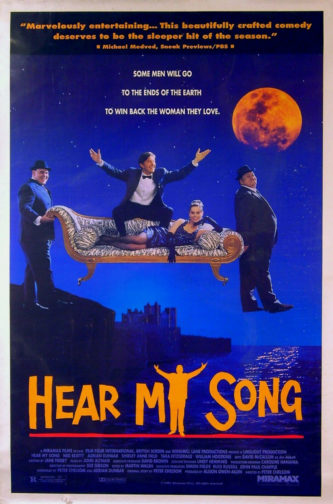 9. HEAR MY SONG
9. HEAR MY SONG
This Irish-centric rom-com is different from 99 percent of other movies, sporting as it does a lousy opening and closing, but a great second act. The beginning is so limp I’m amazed it ever managed to involve me at all, and yet it somehow did. Adrian Pasdar plays a small-time concert promoter trying to jump-start his sputtering career who finds possible salvation in tracking down a famous tenor who disappeared back in the fifties. Pasdar’s search for the guy, played by a never-better Ned Beatty, provides the film’s best moments in a bright, funny and twisted trip through rural Ireland. Director Peter Chelsom seems to have conjured up the spirits of the Irish countryside, and the results were transfixing enough to lure me back for repeat viewings during the film’s early 1992 US arthouse run. It really sucks, then, that the final scenes are so crummy, tying up the film’s varied plot points in severely slapdash and perfunctory fashion.
8. DELUSION
One of the best films to emerge from the nineties neo-noir cycle. Pre-dating RESERVOIR DOGS by over a year, the tight and compelling DELUSION is set, like many of its fellows, in the desert, where an amoral businessman (Jim Metzler) is on the run after embezzling a large sum of money. He runs into two even more amoral lowlifes (Kyle Secor and Jennifer Rubin), and the fun quickly gets underway with generous helpings of sex, murder and disillusionment. Director Carl Colpaert guides this twisted saga with a sure hand and a good eye for realism, and coaxes terrific performances from his cast, most notably the vastly underrated Ms. Rubin (of BAD DREAMS and SCREAMERS), who does what is arguably her best ever film work here.
7. JAG MANDIR (JAG MANDIR: DAS EXZENTRISCHE PRIVATTHEATER 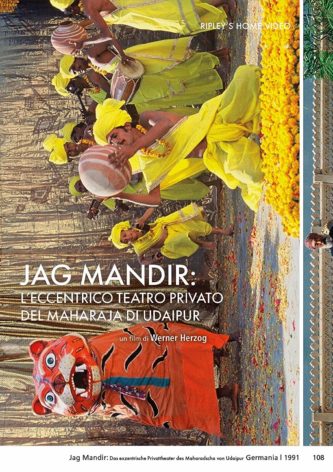 DES MAHARADSCHA VON UDAIPUR)
DES MAHARADSCHA VON UDAIPUR)
This feature-length documentary by Werner Herzog is one of his finest films, and yet remains one of his most obscure, a fact that for me borders on the criminal. It’s about the Maharajah of Udaipur, one of India’s wealthiest men and the owner of a dozen or so giant palaces. Unfortunately, said palaces are slowly sinking into a lake and so the culture-obsessed Maharajah decides to host a “private theatre” in the most endangered of them, the Jag Mandir. He gathers together 2000(!) of India’s finest artists to perform for the amusement of himself and his wide-eyed son. The show starts with a procession around one of the more stable palaces, a truly mind blowing pageant that includes sword dancers, fire eaters and murals, sculptures and costumes of every possible variety. From there a boat takes the Maharajah and his entourage to Jag Mandir, where they’re greeted by a couple dozen actors, dancers and magicians who perform nonstop throughout the day and into the night. There are images here as extraordinary as anything in Herzog’s classic films, including a man lifting a large rock held by a string attached to his eyelid(!!), a meticulously designed sand mural rubbed out immediately upon completion and the sight of the sun setting upon Jag Mandir, half-submerged in a vast sea. Ostensibly a travelogue made for German television, the film transcends itself to become a boisterous celebration of art, culture and everything in between.
6. PINOCCHIO 964 (SCREAMS OF BLASPHEMY)
This utterly insane work of cinematic transgression was the feature debut of Japan’s Shozin Fukui (of RUBBER’S LOVER and DEN-SEN), and remains one of the premiere Japanese cult films of the decade. It’s the cyberpunk-tinged account of Pinocchio 964, a malfunctioning Mohawk-sporting sex android who’s loosed on the streets of Tokyo. Pinocchio takes up with a nutty street chick who promptly goes mad, torturing and chaining up her newfound captive while Pinocchio’s creators launch a citywide hunt, leading to a psychotic nightmare of blood, slime and escalating insanity. Taken as a whole the film is an astonishingly assured cavalcade of psychotic mayhem, rendered all the more impressive by the fact that it was made on an extremely low budget. Fukui’s unhinged cinematics—unfettered handheld camerawork, a wildly unpredictable editing scheme and overtly hysterical performances—perfectly compliment the craziness of the narrative. Fukui creates images as memorable and unsettling as those of Shinya Tsukamoto, Andrzej Zulawski and even David Lynch, all of whom PINOCCHIO 964 recalls—yet there’s ultimately nothing else like it.
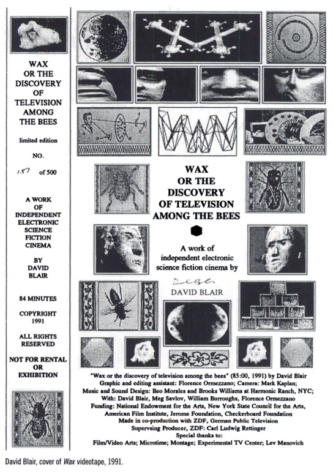 5. WAX, OR THE DISCOVERY OF TELEVISION AMONG THE BEES
5. WAX, OR THE DISCOVERY OF TELEVISION AMONG THE BEES
This mind-bender is one of America’s great cult movies, a creation so blindingly unique and assured it maps out its own inscrutable territory. Having been shot on video and telling its story entirely through voice-over, it’s something I’d normally be weary of yet the pic won me over with its formal audacity and feverishly imaginative narrative. It involves a young weapons designer who while tending a bee colony inherited from his father finds himself prone to all sorts of bizarre visions. He begins to suspect the bees have psychic powers, and indeed he’s right; the bees in fact preside over the “land of the dead,” located on the surface of the moon, and drill a hole in the protagonist’s head that allows him to see the world through their “bee cam” POV. Later he travels to the center of the earth on an assignment to kill somebody and visits the “TV Planet,” where he looks upon the face of God and learns the bees’ ultimate secret, which involves the “ghosts of the future dead.” Got all that? It’s just a taste of the relentless, near-indescribable weirdness this film dishes out at a rate far too dense—and plain mind-boggling—to absorb in a single sitting. Cinematically it’s a bit like a Craig Baldwin movie, with its rapid fire montage composed of state of the art (for the time, anyway) CGI imagery, yet it has a deceptively calm tone; the narrator’s voice never rises above monotone level, which only increases the dreaminess of the enterprise.
4. LOVERS ON THE BRIDGE (LES AMANTS DU PONT NEUFF)
A wild, unruly, disjointed and, in the final analysis, utterly magical love story. This, the third feature by France’s Leos Carax, was at the time the highest budgeted film in French history—and one of the biggest flops. I say French audiences simply misunderstood the film, as did the American viewers who stayed away in droves when LOVERS ON THE BRIDGE made its much-belated US debut (in the summer of ‘99). Carax cast his two favorite actors, Juliette Binoche and Denis Lavant, as drifters on the streets of Paris who meet cute one day when he finds her sleeping in his customary place on the Pont Neuff bridge (under construction, as it was in real life). Their freewheeling romance involves late night museum break-ins, filching wallets from coffee shop patrons, chases through subway tunnels, fire eating, self-mutilation, raw fish scarfing, public intoxication and an amazing aquatic folly amidst a surreal fireworks display, all contained in a rare feat of cinematic bravura that for me represents everything French cinema should be. Trivia note: Carax was denied permission to film on the real Pont Neuff Bridge so a replica was constructed on a soundstage, together with the surrounding buildings.
3. THE RAPTURE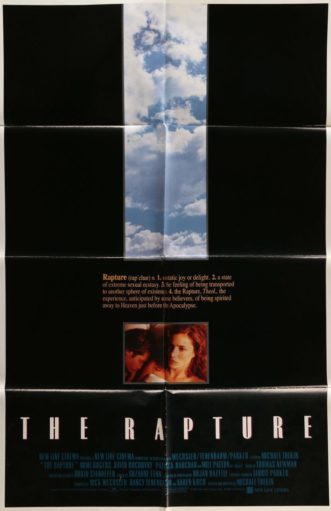
A definite anomaly in American filmmaking: a thoughtful look at modern day Christianity and its effect on the psyche of a disturbed woman. Mimi Rogers plays said woman in one of the finest, and most underrated, performances of the decade. She’s an attractive but dissatisfied So Cal gal desperately trying to fill the void in her life (anyone who’s ever lived in the LA area will immediately recognize the type), first by sex and then by religion. Things don’t get any better for her once she converts to Christianity, as it turns out that what Christians have been saying for centuries is indeed true: the end of the world is near. After her husband (David Duchovny) is killed in a senseless shooting Rogers takes her young daughter into the desert for a face-to-face confrontation with the Big G, and the results are surprising, to say the least. What this film has in its favor is fearlessness and audacity. In direct contrast to all those sappy evangelical flicks about the end of the world (THE OMEGA CODE, LEFT BEHIND, etc.) THE RAPTURE confronts the enigmas of the Bible head on, unafraid to ruffle the feathers of true believers and atheists alike. First time director Michael Tolkin’s helming isn’t always as assured as it could be, and his script sometimes feels more like an extended theological dissertation than a proper narrative, but Mimi Rogers’ exemplary work holds it all together.
2. THE LAST FRANKENSTEIN (RASUTO FURANKENSHUTAIN)
This Japanese epic is shockingly little known, yet it remains one of the freshest and most unique horror films of the 1990s. Written and directed by the famed avant-garde playwright Sake Kawamura, it’s one of those unlikely concoctions that really shouldn’t work yet somehow does, and smashingly well. Kawamura’s script encompasses a suicide plague that’s decimating Tokyo, a teenage girl with wide-ranging psychic powers and a rogue scientist looking to create a new breed of superhuman. Any one of those elements could conceivably have powered a single film, yet they’re mashed together into a confident, streamlined whole that’s poetic, silly and horrific by turns. Particularly unforgettable elements include the sight of superhuman creatures watching porn (to get them in the proper mood to mate and produce an offspring), home movie footage of these freaks cavorting on the beach with their all-too-human pals, and the “Last Frankenstein’s” climactic self-interrogation, a scene so completely unexpected and flat-out weird it can only fit right in.
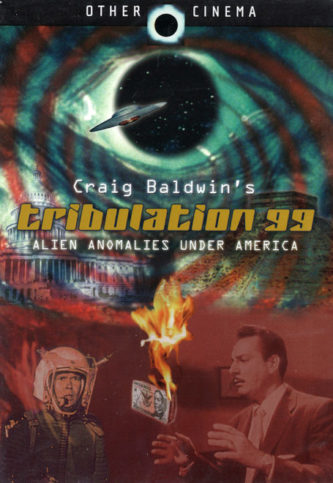 1. TRIBULATION 99: ALIEN ANOMALIES UNDER AMERICA
1. TRIBULATION 99: ALIEN ANOMALIES UNDER AMERICA
A simply amazing 48 minute mind-roaster from the San Francisco based experimental filmmaker Craig Baldwin (SONIC OUTLAWS, SPECTRES OF THE SPECTRUM) that it you ask me remains his finest-ever work. It’s a political screed about America’s interventions in South America that takes the form of a science fiction mockumentary, positing that every major event in the twentieth century is the result of a buried alien spaceship disgorging humanoid robots to mix with the aboveground residents. Baldwin relates this account via a nonstop montage composed entirely of found footage from old B movies, commercials and TV shows. Whispered narration holds it all together, along with hysterical title cards flashed onscreen every few seconds (“THE END IS NEAR”). With a pace that might charitably be called frantic, it never pauses for logic, thought, or breath–meaning that the film doesn’t always make sense (indeed, it rarely ever does), but I guarantee you’ll have a great time trying to figure it out.
